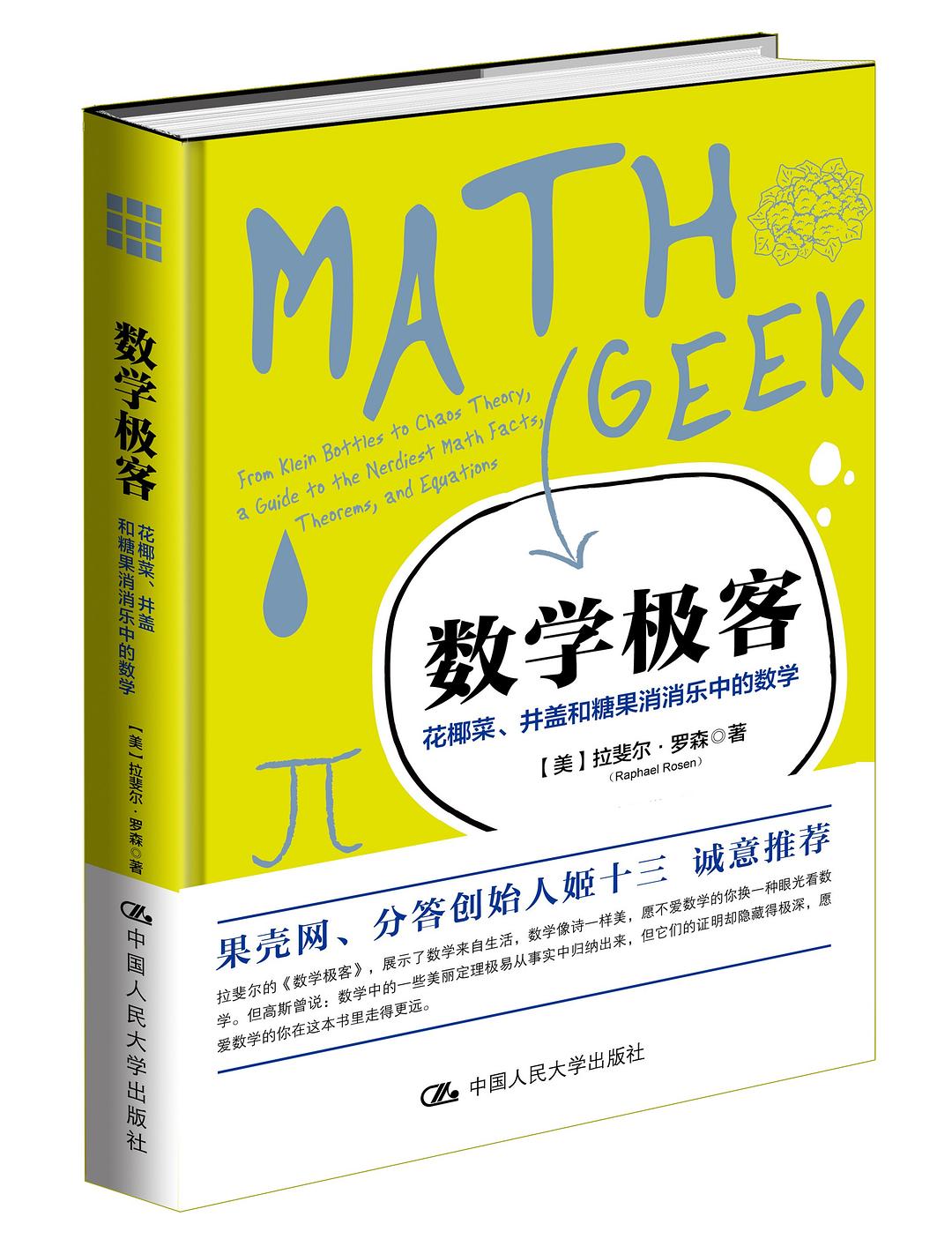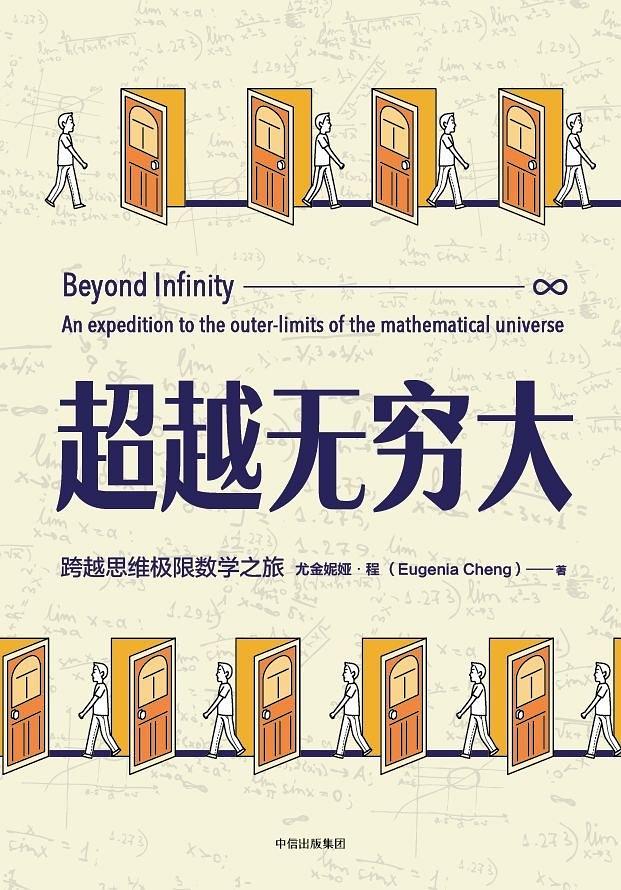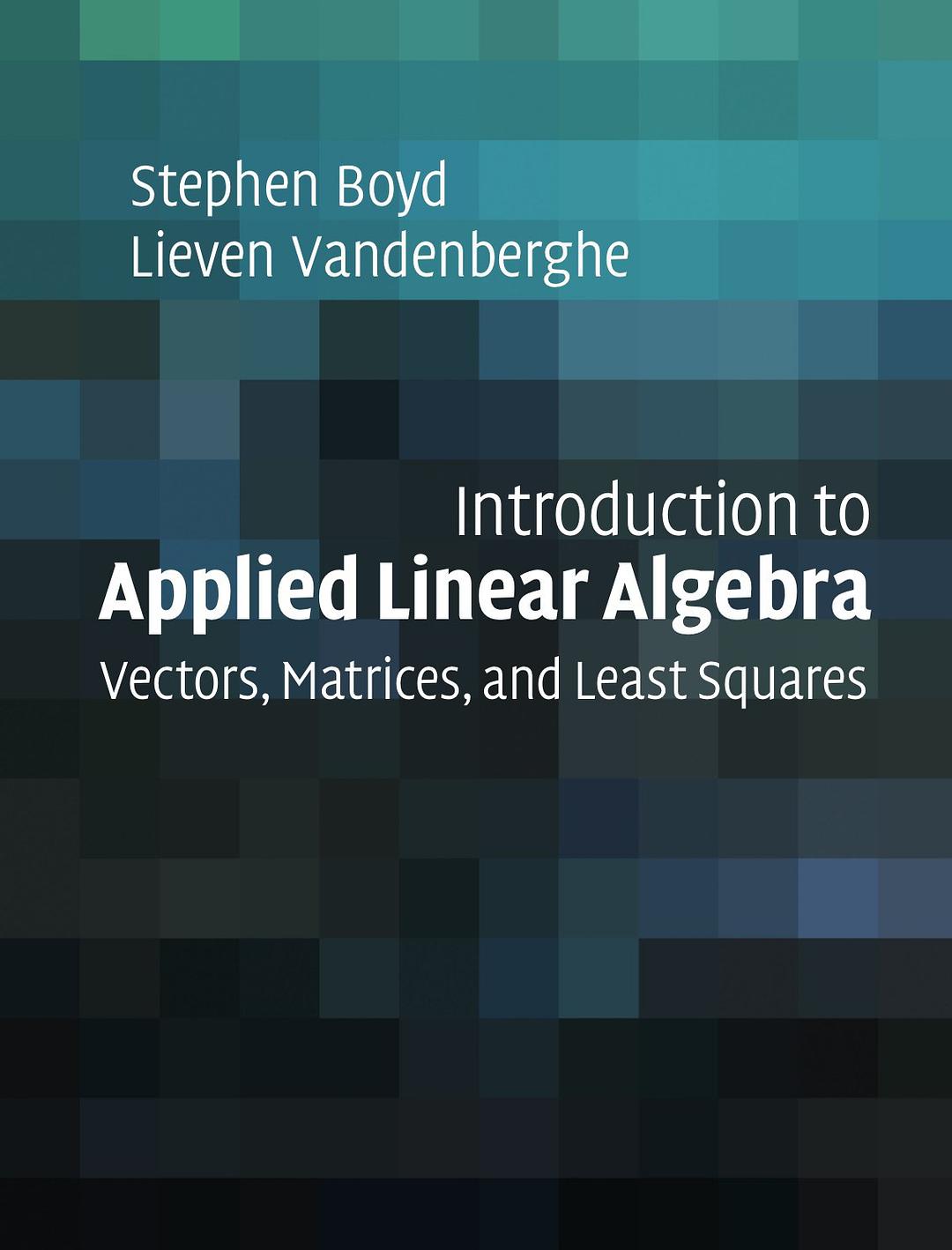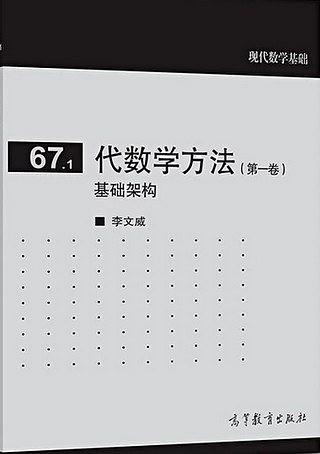-

神奇的数字零
这是一场关于数字0的奇妙历险,除了追踪0的符号与意义的演变历程,还有数字0的宗教、历史、哲学及科学的想象。
在0出现之前的年代,纯粹的逻辑是主宰者,宇宙建构在有理数之上,昭显着上帝的存在,一切皆有迹可循,秩序井然。
随后,在充满0的宇宙里,逻辑溃不成军,量子理论和相对论土崩瓦解。物理学上所有大谜题背后都潜藏着0的身影,黑洞的无限密度是除以0,无中生有的大爆炸也是除以0,真空的无穷能量还是除以0……
科学家们最终知道,宇宙始于0,终于0。谁能掌握0,谁将掌握宇宙的奥秘。
本书文笔简练,字句诙谐,内容丰富,极具启发意义,既是作者对世间最古怪的数字投去的审视目光,也是作者对人类思想中最伟大的悖论进行的深沉思考。
-

几何世界的邀请
平面几何是观察判断与逻辑思考的精妙结合,是初等数学教育中培育创造力的好途径。本书为日本数学家、菲尔兹奖得主小平邦彦先生的几何入门作品,书中以欧几里得几何、希尔伯特几何、复数与几何为轴线,由浅入深,层层深入,从作为图形科学的几何、作为数学的几何等不同角度介绍完整的几何世界,是几何入门、训练思维与创造力的佳作。
-

数学极客
你梦到过长除法吗?复杂方程的解法会让你莞尔一笑吗?你每年三月会庆祝π日吗?如果是,这本《数学极客》就是为你而生的!有了这本指南,你可以在用从未想过的方式探索大自然的同时,更加了解数学的力量和美。从椰菜花到肥皂泡再到地铁路线图,每一页都能让你以大数学家的眼光去认识世界,探索如何将他们发现的定理和方程应用到万事万物中。这本书包罗了几十个你最喜欢的数学主题,你将从中找到下面这些有趣的问题的答案:
地铁线路图遗漏了什么?
雨滴和泪珠的形状为什么不同?
谷歌翻译的工作原理是什么?
糖果消消乐里藏着一个什么样的数学难题?
如何让包裹配送更加高效?
为什么多修公路反而会使交通更拥堵?
为了躲雨,你应该走还是跑?
这本《数学极客》里满是引人入胜的数学解释,揭开了深藏在日常生活中的神奇的数学世界。 让你体会:学数学就像看日落、读小诗、或听你最喜欢的乐队演唱一样,它有一种能吸引你驻足欣赏的魅力。换句话说,学数学不只是为了在测验中考个好成绩,而是为了充实自己的人生。
-

超越无穷大
数学的世界浩瀚广博,其中“无穷”的世界更是引人入胜。小孩子从学数数开始便会渐渐明白,数字的世界是无穷的,找不到尽头。拥有无穷多房间的酒店是什么样子?饼干罐里又藏着怎样的“无穷”的奥秘?0和1这两个简单的数字之间还存在着无穷多的数字,那么这里的“无穷”和饼干罐里的“无穷”是一样的吗?“无穷”与“无穷”之间有大小之分吗?
这本书就是一次为你解答这些问题,通往神秘而壮美的“无穷”世界的旅程。作者从知名的希尔伯特旅馆实验切入,告别以往数学的枯燥,以“好玩又好吃”的方式对“无穷大是什么”和“生活中极限思维的发现与运用”做出了通俗幽默的解读。
在这场跨越数学思维极限的冒险旅程中,你不仅能看到这个并不起眼的小符号∞是如何支撑起那些宏大的数学概念的,你还将再一次发掘那些位于数学核心领域的基础概念的魅力所在。
我们即将看到的风景会让我们大开眼界、惊叹不已,甚至有的时候会让我们觉得不可思议。我们将会沉浸在数学的魔力里,但是又不用完全受其摆布。和无穷的概念一样,我们将会朝着人类思想的地平线前进,但是又永远不会到达。
-

Introduction to Applied Linear Algebra
This book is meant to provide an introduction to vectors, matrices, and least squares methods, basic topics in applied linear algebra. Our goal is to give the beginning student, with little or no prior exposure to linear algebra, a good grounding in the basic ideas, as well as an appreciation for how they are used in many applications, including data fitting, machine learning and artificial intelligence, to-mography, navigation, image processing, finance, and automatic control systems.
The background required of the reader is familiarity with basic mathematical notation. We use calculus in just a few places, but it does not play a critical role and is not a strict prerequisite. Even though the book covers many topics that are traditionally taught as part of probability and statistics, such as fitting mathematical models to data, no knowledge of or background in probability and statistics is needed.
The book covers less mathematics than a typical text on applied linear algebra. We use only one theoretical concept from linear algebra, linear independence, and only one computational tool, the QR factorization; our approach to most applications relies on only one method, least squares (or some extension). In this sense we aim for intellectual economy: With just a few basic mathematical ideas, con-cepts, and methods, we cover many applications. The mathematics we do present, however, is complete, in that we carefully justify every mathematical statement. In contrast to most introductory linear algebra texts, however, we describe many applications, including some that are typically considered advanced topics, like document classification, control, state estimation, and portfolio optimization.
The book does not require any knowledge of computer programming, and can be used as a conventional textbook, by reading the chapters and working the exercises that do not involve numerical computation. This approach however misses out on one of the most compelling reasons to learn the material: You can use the ideas and methods described in this book to do practical things like build a prediction model from data, enhance images, or optimize an investment portfolio. The growing power of computers, together with the development of high level computer languages and packages that support vector and matrix computation, have made it easy to use the methods described in this book for real applications. For this reason we hope that every student of this book will complement their study with computer programming exercises and projects, including some that involve real data. This book includes some generic exercises that require computation; additional ones, and the associated data files and language-specific resources, are available online.
If you read the whole book, work some of the exercises, and carry out computer exercises to implement or use the ideas and methods, you will learn a lot. While there will still be much for you to learn, you will have seen many of the basic ideas behind modern data science and other application areas. We hope you will be empowered to use the methods for your own applications.
The book is divided into three parts. Part I introduces the reader to vectors, and various vector operations and functions like addition, inner product, distance, and angle. We also describe how vectors are used in applications to represent word counts in a document, time series, attributes of a patient, sales of a product, an audio track, an image, or a portfolio of investments. Part II does the same for matrices, culminating with matrix inverses and methods for solving linear equa-tions. Part III, on least squares, is the payoff, at least in terms of the applications. We show how the simple and natural idea of approximately solving a set of over-determined equations, and a few extensions of this basic idea, can be used to solve many practical problems.
The whole book can be covered in a 15 week (semester) course; a 10 week (quarter) course can cover most of the material, by skipping a few applications and perhaps the last two chapters on nonlinear least squares. The book can also be used for self-study, complemented with material available online. By design, the pace of the book accelerates a bit, with many details and simple examples in parts I and II, and more advanced examples and applications in part III. A course for students with little or no background in linear algebra can focus on parts I and II, and cover just a few of the more advanced applications in part III. A more advanced course on applied linear algebra can quickly cover parts I and II as review, and then focus on the applications in part III, as well as additional topics.
We are grateful to many of our colleagues, teaching assistants, and students for helpful suggestions and discussions during the development of this book and the associated courses. We especially thank our colleagues Trevor Hastie, Rob Tibshirani, and Sanjay Lall, as well as Nick Boyd, for discussions about data fitting and classification, and Jenny Hong, Ahmed Bou-Rabee, Keegan Go, David Zeng, and Jaehyun Park, Stanford undergraduates who helped create and teach the course EE103. We thank David Tse, Alex Lemon, Neal Parikh, and Julie Lancashire for carefully reading drafts of this book and making many good suggestions.
-

代数学方法(第一卷)
本书主要目的是介绍代数学中的基本结构,着眼于基础数学研究的实际需求。全书既包括关于群、环、模、域等结构的标准内容,也涉及范畴和赋值理论,在恪守体系法度的同时不忘代数学和其他数学领域的交融。
本书可供具有一定基础的数学专业本科生和研究生作为辅助教材、参考书或自学读本之用。